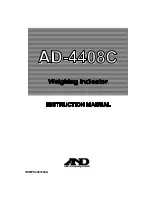
Inside the 3TB
3. The E/W component follows in the same way. All three masses are now
centred and the process completes.
After the sensor unlocks the masses, the first round of centring has to move the N/S
and E/W components all the way from their end stops, whilst the Z component is
often closer to the proper position. Because of this, the first Z centring operation
takes much less time than the others, and you may not notice it.
After successful centring, the mass position outputs should be in the range 0.1 – 0.8
Volts. If the centring process leaves the mass position outputs above ±1.1 Volts, you
should start another centring cycle by activating the
CENTRE
command again. You
will probably need to initiate the centring process several times before the masses
are adequately centred.
6.3 The feedback system
The output from a modern broadband seismometer does not depend on the natural
characteristics of the instrument. Instead, the period and damping of the sensor are
completely determined by a feedback loop which applies a force to the sensor mass
opposing any motion. The force required to
restrain
the movement of the mass can
then be used to measure the inertial force which it exerts as a result of ground
motion.
All Güralp 3 series units are based on these general principles. The capacitative
position sensor for each mass produces a voltage proportional to the displacement of
the mass from its equilibrium position. After amplification, this voltage generates a
current in the force transducer coil which tends to force the mass back toward
equilibrium. The feedback loop has a sufficiently high gain to cancel the motion of
the mass. Since the mass is not moving, the forces acting on it must be balanced;
the feedback voltage then directly measures the force, and hence the acceleration,
which is being applied to the mass. The feedback loop introduces a phase shift,
which must be carefully controlled if the instrument is to remain stable over its
entire frequency range. This is achieved using compensation components in the
forward and feedback paths.
Force feedback seismometers of this type rely on the assumption that the force
transducer produces a field of constant strength. The magnetic circuit and
magnet/pole assembly in the 3TB are designed so that the field strength from the
feedback transducer is constant over large deflections and current levels. Tests have
shown that the mechanical suspension system and electronics of a 3TB instrument
are linear to better than 107 dB (source: measurements made at ASL during
evaluation for the USGS National Network.)
In a feedback seismometer with a displacement transducer, it is essential to monitor
the acceleration (mass position) output. This provides the position of the
displacement transducer and therefore also the mass position, as the displacement
transducer is attached to the sensor inertial mass. The sensor should always be
65
Issue G - November 2019











































